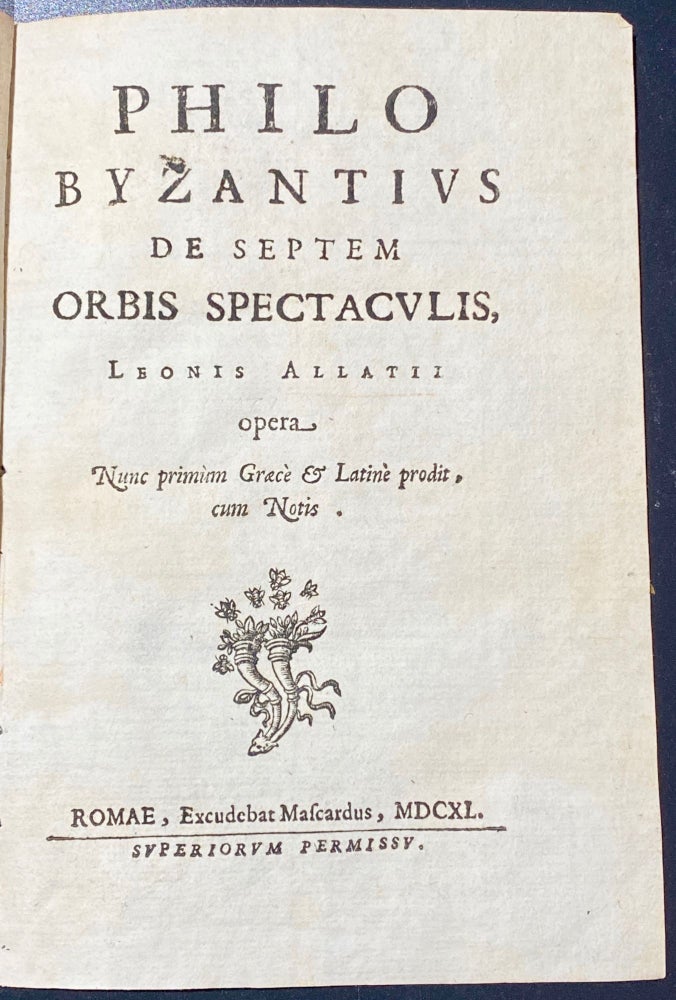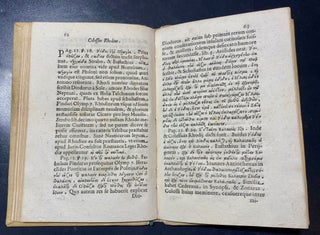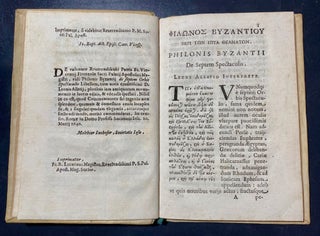Philo byzantius. De Septem orbis spectaculis, Leonis Allatii opera nunc primum graece et latine prodit, cum notis. (in greek & Latin)
Romae : excudebat Mascardus 1649. First edition. Bound in coeval vellum. A treatise conventionally titled De septem mundi miraculis, on the Seven Wonders of the World, is properly ascribed to another Philo of Byzantium, known as "the Paradoxographer", who belongs to a much later date, probably the 4th-5th century A.D. An English translation by Jean Blackwood is included as an appendix in The Seven Wonders of the World by Michael Ashley (Glasgow: Fontana Paperbacks, 1980). The Seven Wonders of the Ancient World is the first known list of the most remarkable creations of classical antiquity; it was based on guidebooks popular among Hellenic sightseers and only includes works located around the Mediterranean rim. The number seven was chosen because the Greeks believed it represented perfection and plenty, and because it was the number of the five planets known anciently, plus the sun and moon. Many similar lists have been made.[The classic seven wonders were:
Great Pyramid of Giza Mausoleum at Halicarnassus Temple of Artemis at Ephesus
Hanging Gardens of Babylon Colossus of Rhodes Statue of Zeus at Olympia
Lighthouse of Alexandria. Quarto 7 ¼ x 5 ¾ inches ≠4,A-G8. First Edition. Bound in coeval vellum. Greek and Latin. Item #738
Price: $2,400.00




